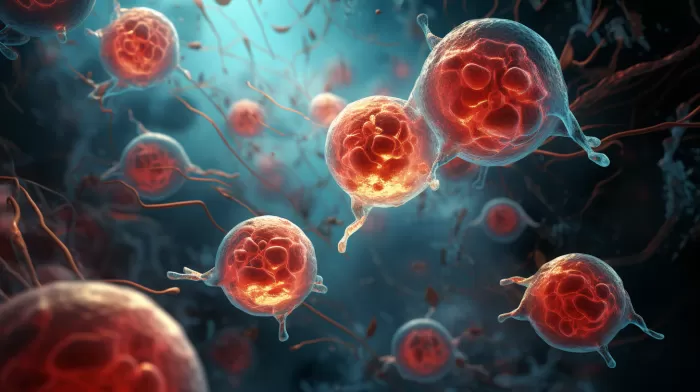If you’re looking to improve your health and live a longer, healthier life, it’s essential to address the fat around your waistline. It turns out that the stubborn fat tissue in our belly isn’t just an annoying aspect of aging, but a very active part of our internal system that releases harmful chemicals, increasing the risk of heart attack, cancer, and other illnesses. In this article, we will dive deeper into what our waistline fat is doing inside our bodies and what we can do to combat its effects.
The truth about belly fat is that it is far from being just a passive deposit of excess calories. Recent research has revealed that fat cells actively secrete various hormones and chemical messages, influencing our bodies in different ways. The increased risk of disease associated with carrying too much belly fat is directly linked to the substances that our fat cells produce. Over 80 different proteins have been identified in fat cells, including six new ones and 20 proteins not previously detected in human fat cells. These findings open the door for a more detailed understanding of the role of waistline fat in heart disease, diabetes, and other diseases.
Some of the hormones secreted by our fat cells are actually beneficial, such as leptin, which regulates our appetite, and adiponectin, which makes our bodies more sensitive to insulin and helps control blood sugar levels. However, many of the other substances released by these cells can trigger inflammatory processes, which contribute to the development of various diseases.
Inflammation is your body’s natural defense mechanism against foreign invaders like bacteria and viruses. However, when inflammation is persistent and not appropriately regulated, it becomes a significant cause for concern. Chronic inflammation has been seen to damage cells and tissues, increase the risk of various diseases, and speed up the aging process.
Belly fat produces a range of inflammatory substances that promote this chronic inflammation. These include cytokines like tumor necrosis factor (TNF) and interleukin-6 (IL-6), which are directly linked to a higher risk of heart disease. Excessive waistline fat can also cause insulin resistance, contributing to the development of type 2 diabetes. There’s even evidence that these harmful substances can travel around the body, increasing the risk of developing certain types of cancer.
In light of this evidence, it is clear that reducing belly fat should be a top priority for anyone looking to improve their health. But how can you go about targeting this specific type of fat?
Firstly, it’s crucial to adopt a balanced and nutritious diet. This means cutting back on processed, sugary, and fatty foods, and instead focusing on whole foods like fruits and vegetables, lean proteins, and healthy fats. Emphasizing fiber-rich foods can help regulate your digestive system, making it easier to shed excess weight.
Regular exercise is also vital in the battle against belly fat. Combining cardiovascular workouts (such as brisk walking, cycling, or swimming) with strength training exercises (like weightlifting or bodyweight exercises) has been found to be the most effective way to target and reduce waistline fat. Aim for at least 3-5 workout sessions per week that involve both cardio and strength exercises, and see improvements in your belly region.
Getting enough sleep plays a role in regulating waistline fat as well. A lack of sleep can disrupt the balance of hormones that regulate fat storage and appetite, causing you to overeat and store more fat in your abdominal area. Aim for 7-9 hours of sleep per night to keep your hormones in check and prevent excess belly fat accumulation.
Lastly, managing stress is an essential part of maintaining a healthy waistline. Stress can trigger cortisol production, a hormone that has been linked to increased belly fat storage. Incorporating stress-reduction techniques like yoga, meditation, or mindfulness into your daily routine can help counteract the impact of cortisol on your waistline.
In conclusion, waistline fat is far from being a passive annoyance. It actively introduces harmful chemicals into our bodies, increasing the risk of heart attack, cancer, and other diseases. By adopting a nutritious diet, engaging in regular exercise, getting enough sleep, and managing stress, you can tackle this dangerous fat and enjoy a healthier, longer life. Don’t let your waistline fat waste you – take control and make changes today!



